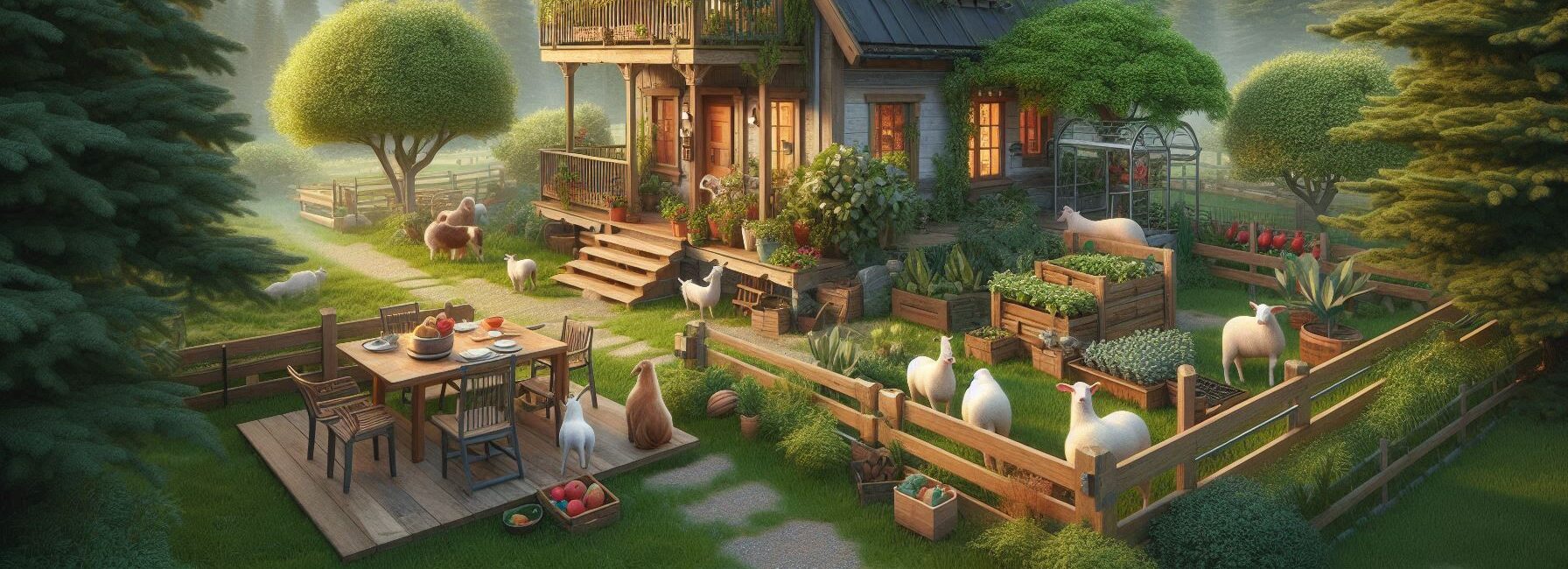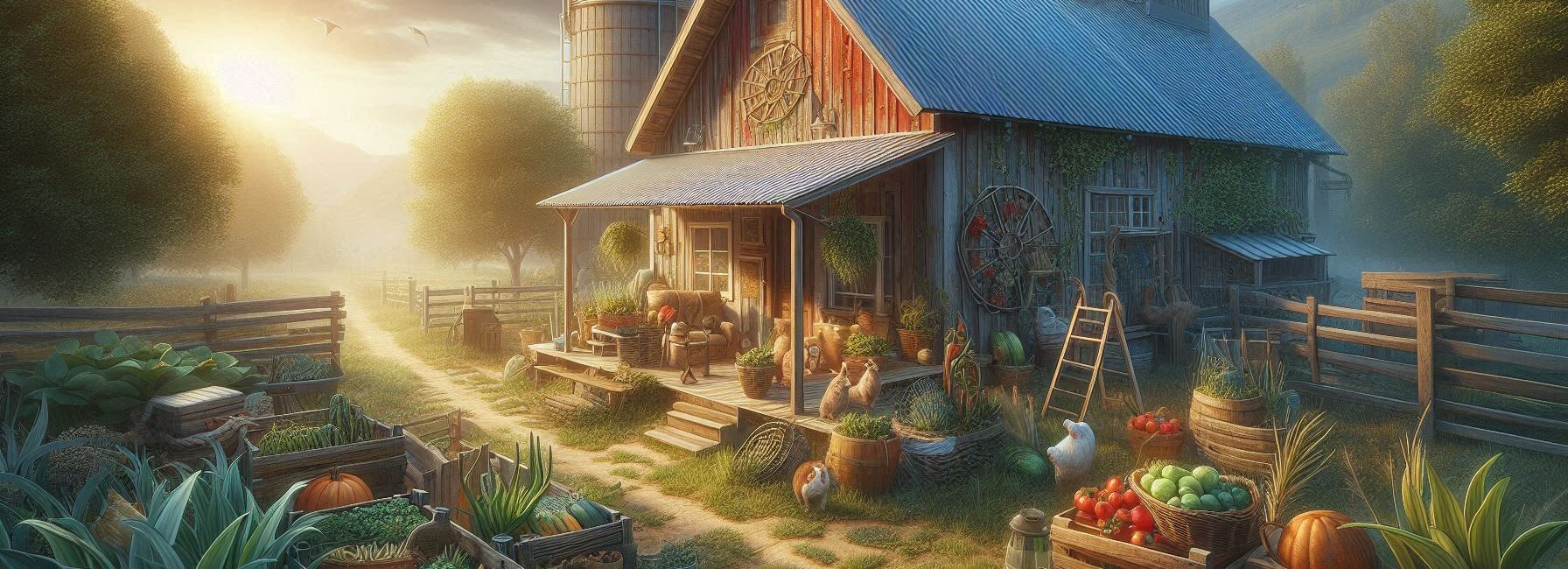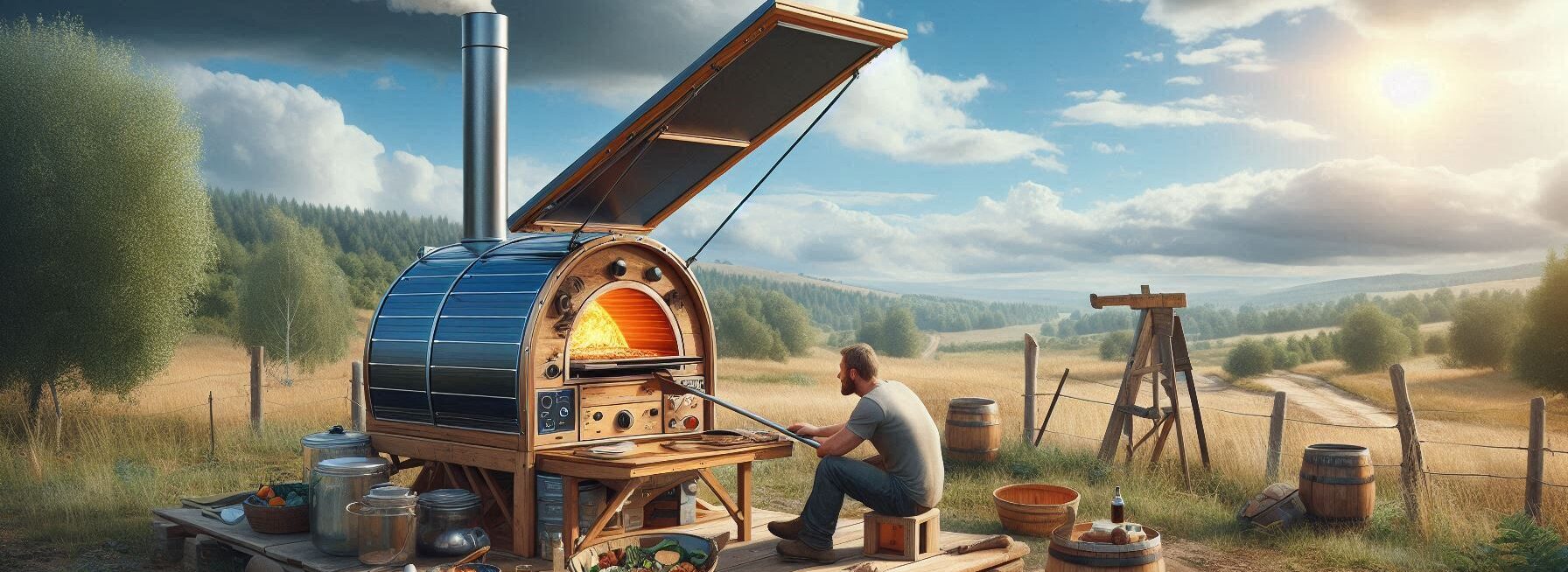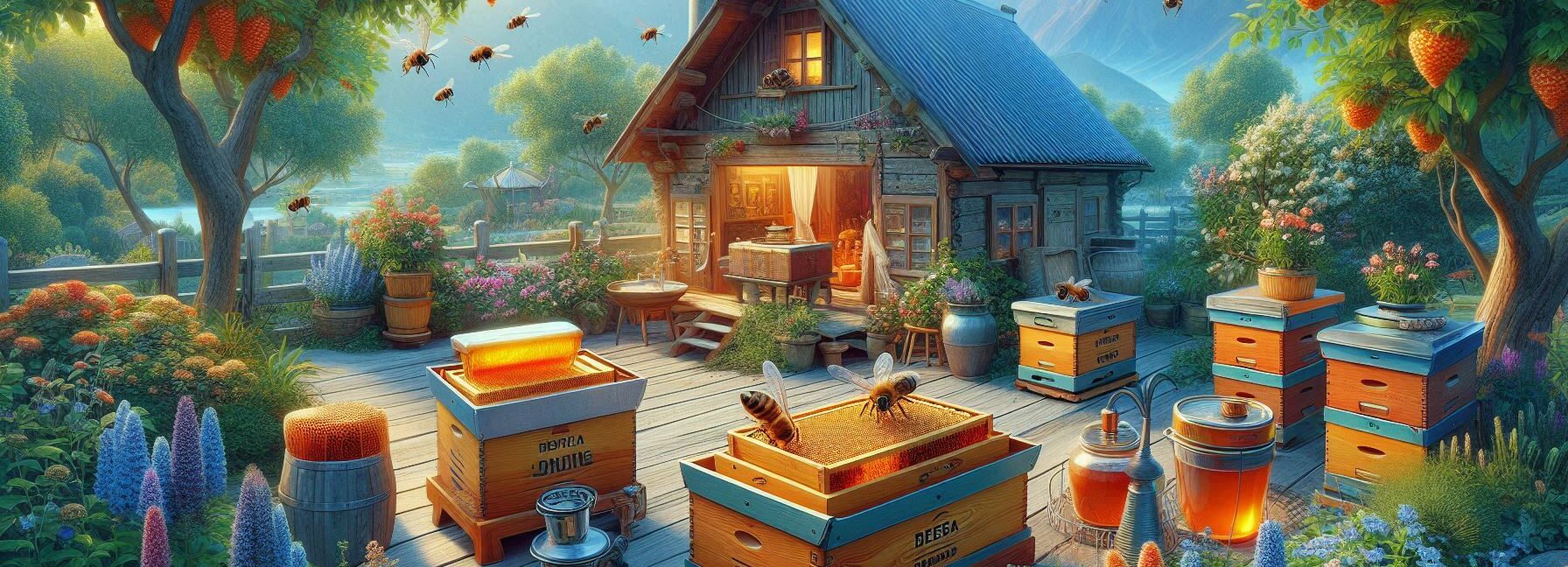Please Note: This post may contain affiliate links. If you click one of them, we may receive a commission at no extra cost to you. As an Amazon Associate, I earn from qualifying purchases.
Last Updated on November 2, 2025 by Kevin Collier
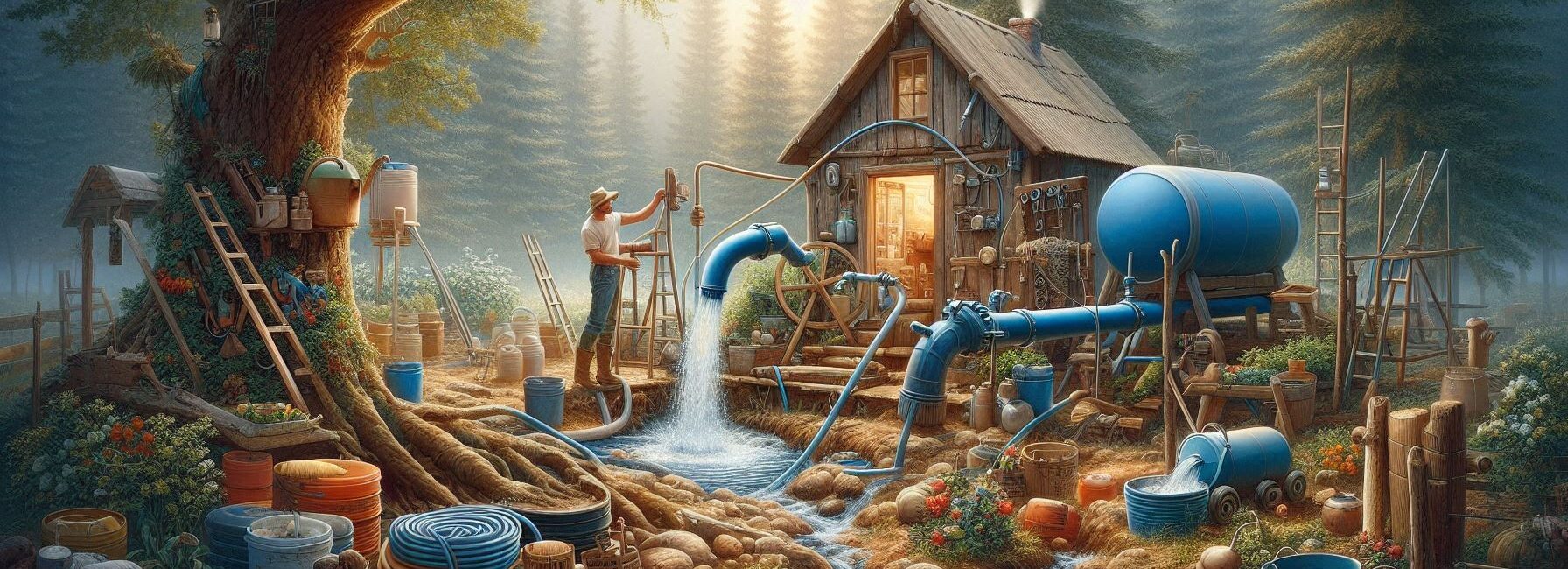
Top Takeaways and Key Concepts
- Calculate daily water needs for people, animals, and crops before planning.
- Collect rainwater using covered barrels with screens to prevent contamination.
- Consider a well for reliable water, and schedule regular inspections.
- Store water in opaque tanks and use gravity-fed systems when possible.
- Filter or purify all water before use to ensure safety.
Think about this for a second: water is super important for homesteading. It’s like coffee on a Monday morning. Without it, everything’s a mess. Plants droop like they forgot to stretch, animals get cranky, and then you’re stuck in trouble. Not the fun kind of trouble, but a real pickle!
So, how do we keep that water flowing without taking a hike every time you need a drink? Let’s figure this out together.
First off, think about where you can get water. Are there streams nearby? Maybe a pond or a rainwater setup? Collecting rainwater is a great way to start. You can use barrels to catch it off your roof. Just make sure to cover those barrels so you don’t invite all the bugs to the party!
Next, you’ll want to set up a good system. Think about hoses and drip systems for your plants. That way, they get just the right amount of water, and you don’t have to stand there with a watering can. So nice, right?
If you have animals, make sure their water is fresh. Change it often. No one likes yucky water, not even your chickens. Trust me, they'll thank you with more eggs!
Also, storing water for dry days is smart. Fill up big containers if you can. It’s like having a little backup stash. You don’t need to carry a bucket on your head. Who wants that?
Take some time to check your system and make sure everything’s working right. Little leaks can mess up your day.
Overall, the goal is to make life easier. With a solid water setup, your homestead can thrive. So, let those plants get happy, and keep those animals content! That way, you’re ready to enjoy the good stuff—like fresh veggies and maybe even a slice of that pickle, the yummy kind!
Contents of This Page
*** Shop for Survival Gear - Tools - Kits ***
Survival Gear - Bags and Backpacks - Knives - Boots/Footwear - Communication
Outdoor Cooking - Gloves - Hydration - Dry Boxes - Water Filtration Systems
Tents - Sleeping Bags - First Aid Kits - Multi-Tools - Flashlights - Fire Starters
Navigation - Survival Food - Night Vision - Headlamps - Stun Guns - Binoculars
Assessing Your Water Needs
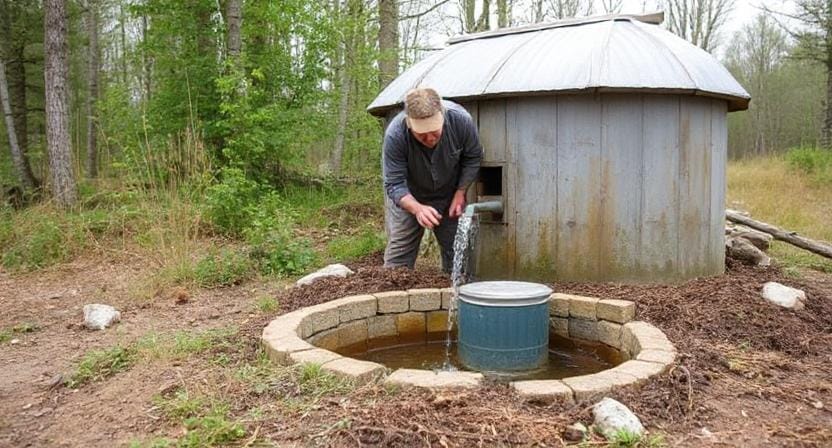
First things first: how much water do you actually need? This isn’t just an academic question; understanding your usage is crucial. Think about everything that requires water—gardens, livestock, cleaning up after those adorable yet messy chickens (seriously, why do they think dirt baths are necessary?), and even yourself!
I remember when I first started my homesteading journey; I didn’t give this part much thought. My plants were thirsty little creatures demanding more water than I anticipated. It was like hosting an all-you-can-eat buffet but forgetting to bring enough food!
To avoid similar disasters, calculate your daily needs based on the number of people living there and any animals or crops you’re tending to.
Once you've figured out how much H2O you're working with, you can start planning how to collect and store it effectively. Speaking of which…
Rainwater Harvesting
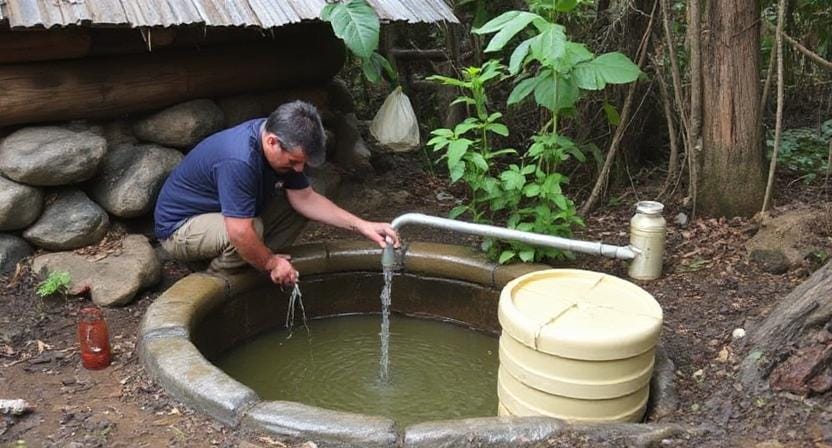
Rainwater harvesting is one of the most sustainable methods for collecting water. Picture this: every time it rains (and believe me, in some places it rains way too much), you're capturing that precious liquid gold instead of letting it run off into the street like lost pennies!
You can set up a simple system using gutters and downspouts attached to barrels or tanks. Just imagine standing outside during a rainstorm with an umbrella while strategically positioning containers below those gutters—it's like being a water-catching ninja!
Make sure your collection system has screens over the openings so leaves and bugs don’t join the party.
By the way, if you're worried about cleanliness (because who wants bug soup?), consider adding filters before using rainwater for drinking or cooking. A little extra effort now means fewer trips to the doctor later!
Well Water Systems
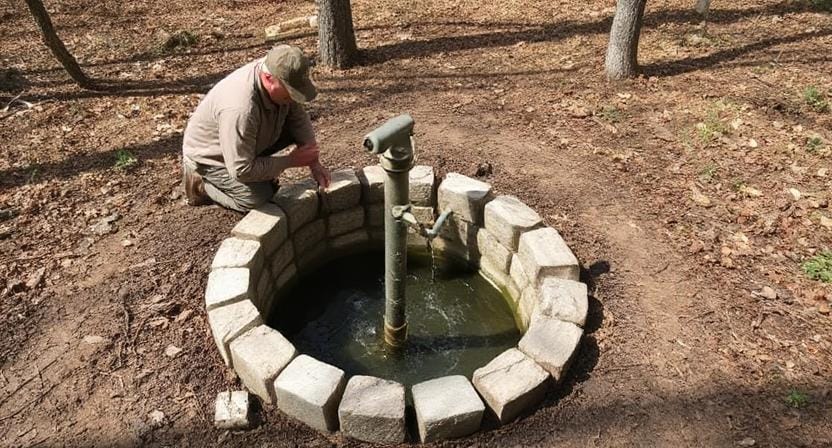
If you can't collect rainwater or want to do something really big, you might want to think about drilling a well. Before you get too excited about the idea of being a modern-day miner looking for gold (or at least fresh groundwater), let's be honest: drilling a well requires permissions and experts.
That being said, having access to well water can be quite helpful. It provides you piece of mind knowing where your water originates from and gives you constant access without having to rely exclusively on rainfall patterns (which may be as unpredictable as my dog's behavior at dinner time).
Taking care of your well once it's been installed is really important. It is safe to drink because it is tested regularly. There is nothing worse than realizing that you have been drinking bad water before dinner! Many places, interestingly, mandate yearly inspections for things like germs or heavy metals. It's better to be safe than sorry!
Ways to Store Water
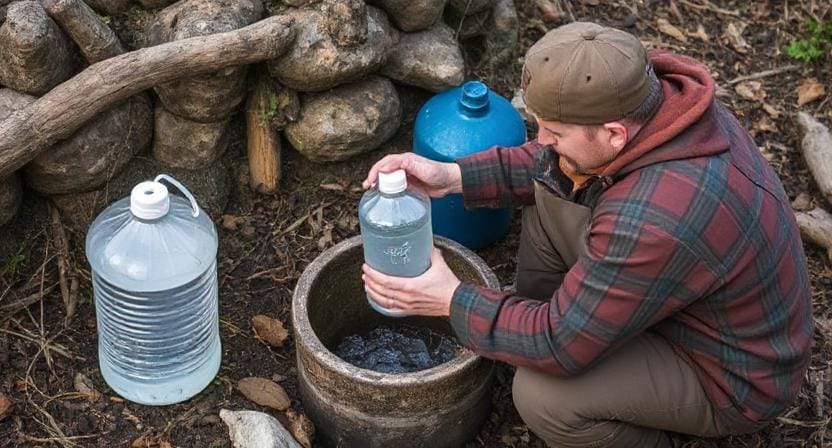
Now that we've decided where to get our water from—either rainwater or a well—we need to think about how to store it. You wouldn't want all that hard work to go to waste, would you?
Large tanks are great for holding rainwater or well water that has been collected. They come in different sizes, so you can choose the one that fits your needs and the space you have. Make sure these tanks are not see-through. In the spring, sunlight makes algae grow faster than weeds!
Also, think about using gravity-fed systems wherever you can. These let you reserve water pressure without having to operate pumps all the time, which saves a lot of energy. As an extra benefit? When everything works perfectly together, you'll feel like a genius in engineering!
Cleaning And Filtering Water
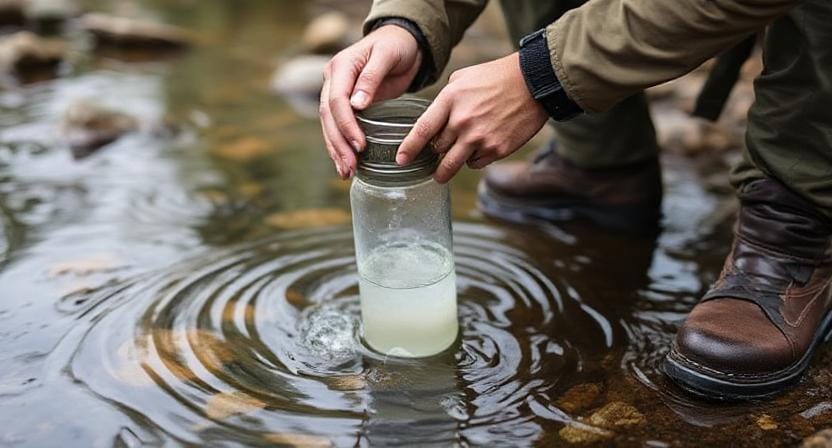
Let's be honest: not all heroes wear capes, and not all water is clean directly from the source! Making sure your water is safe should be your number one priority, along with making sure there are no squirrels planning to attack you.
Think of it as giving your water its own spa day: a decent filtration system will help get rid of silt and other things before you use it. There are carbon filters that can make the water taste better and UV purifiers that eliminate bacteria without using chemicals.
If you like to do things yourself (like I do when I'm trying something new), boiling collected rainwater works great too. Just make sure it cools down completely before serving anyone, or they might get burned!
Taking Care Of Your System
It's not enough to merely set up a self-sufficient water system; you also need to do regular maintenance to keep everything functioning smoothly over time! Check your pipes often for leaks. No one wants to find a geyser out of the blue. The last thing we need is for someone to fall while trying to get their favorite watering can.
It's also a good idea to check tank levels often so you know when you might need to collect more water because of unexpected drought conditions, which might develop faster than you think!
And hey, even if most of the labor here is done by rain or subterranean springs, it's always good to have backups on hand just in case Mother Nature decides she needs some alone time and doesn't send us any water!
Conclusion
At first, it could seem hard to set up a water system. I mean, it might seem like a big mystery, right? But believe me, if you get it rolling with some strategy and imagination, it'll be easy. You'll wonder, “Why didn't I do this sooner?”
Just think about it. Those days when it rains? They will be your best friends. You won't need to go outside to collect all the water you need. Have some sturdy buckets ready to collect the rain. Your plants and animals can use them as little treasure chests.
And even on those sunny days when things go dry, you'll be ready. Thanks to the water system you've made, you'll know your garden is still happy and full of fresh vegetables.
Think about how great it is to have everything you need at home. It's amazing how plants can grow strong and healthy when you give them a little love. Plus, you'll feel good about yourself when you consume the tasty food you cultivated yourself.
It can be so much fun to work with nature. There can be some laughing and maybe a few silly missteps along the way. Just smile through it. It's all part of the fun. You won't even notice how quickly your home will be full with flowers, vegetables, and maybe even some pets enjoying the beautiful water you set up for them.
Let's do this! Get your tools, put on a huge smile, and let's get to work.
Frequently Asked Questions
How do I determine how much water my homestead needs?
Calculate daily water usage by including people, livestock, and crops so you can size your collection and storage system accurately.
Is rainwater safe to use?
Rainwater can be used if collected through screened and covered systems, but it should always be filtered or purified before consumption.
Should I consider drilling a well?
A well provides steady supply, but requires proper permits and regular water quality inspections to ensure safety.
What type of storage tank is best?
Opaque tanks help prevent algae growth and are ideal for long-term storage in self-sufficient systems.
Is a gravity-fed system good for homesteading?
Yes, gravity systems reduce dependence on pumps, saving energy while providing consistent pressure for watering and household needs.
Do I still need to filter water if it looks clean?
Yes, filtration or purification is essential because contaminants and microbes may be present even in water that appears visually clear.
How often should I inspect my system?
Check tanks, lines, and wells regularly for leaks and contamination to prevent issues from happening unexpectedly.
Suggested Resources:
Rainwater Harvesting Guide
https://www.epa.gov/rainharvesting
How to Drill Your Own Well
https://www.wikihow.com/Drill-a-Well
Water Filtration Systems Explained
https://www.waterfiltercomparisons.com/filtration-guide

Kevin Collier is a seasoned survivalist and expert in prepping and homesteading, contributing to WiseSurvive.com. With a deep-rooted passion for self-sufficiency and outdoor survival skills, Kevin shares practical advice, strategies, and resources to help individuals prepare for any challenge. His informative articles cover a range of topics, from essential survival techniques to sustainable living practices, empowering readers to thrive in any situation. Whether you're a novice or a seasoned prepper, Kevin's insights will inspire you to take charge of your readiness and build resilience for the future.

